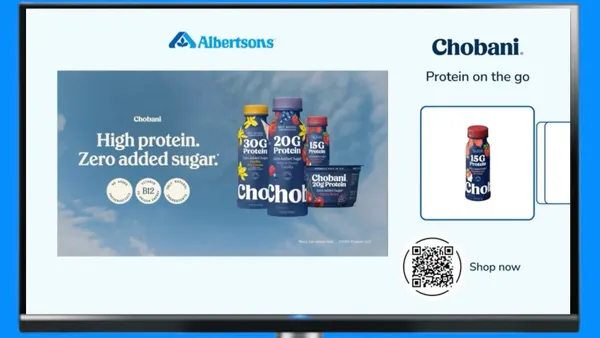Dive Brief:
- Prime-time ad spending for broadcast television is estimated to be up 3% from last year to $9.2 billion, according to a Jefferies & Co report cited in The Wall Street Journal. Another firm, Pivotal Research Group, projects a 4% lift during the "upfront," the time of year when advertisers commit to buying the bulk of ad inventory for the coming TV season.
- The upfront was more successful than some analysts expected, potentially due to concerns over issues in digital advertising like fraud, viewability and brand safety, the Journal said.
- Jeffries & Co. had previously predicted spending to be down this year, but networks like NBC and ABC drove major volume gains after spotting strong consumer demand for morning news and late-night TV, according to Variety.
Dive Insight:
Analysts have long predicted the digital eclipse of traditional TV in total ad spending, a forecast spurred in large part thanks to a surge in mobile's popularity. However, results from this year's upfront negotiations signal that TV remains an important part of brands' advertising strategies, especially as digital faces a wave of criticism for being overly-complicated, non-transparent and sometimes not successful in delivering on some key marketing metrics like viewability, with major marketers like P&G recommitting to TV.
Marketers should keep in mind that robust upfront negotiations do not guarantee longer-term financial gains, per the Journal, as advertisers have the ability to cancel throughout the year. This could likely signal, however, that traditional TV is still a strong channel to reach a wide network of consumers, despite cord-cutting and the steady shift toward online streaming. Advertising in that space continues to grow, reaching $71.6 billion in the U.S. last year, according to eMarketer. 2016 was the first year that digital ad spend outpaced that of TV.
A major challenge for TV overall is declining ratings, which have dropped 33% over the last four years, even as ad prices have gone up 20% over the same time frame, per ad-buying agency Magna. Cord-cutting impacts the potential audience size, especially among valued younger demographics, and viewers have an increasing number of viewing options online from streaming services like Netflix and Hulu, cable alternatives like Google's new YouTube TV and Hulu's new live TV service. Even social media platforms are getting into the TV and TV-like content space, adding to an already-crowded market of video content platforms.













